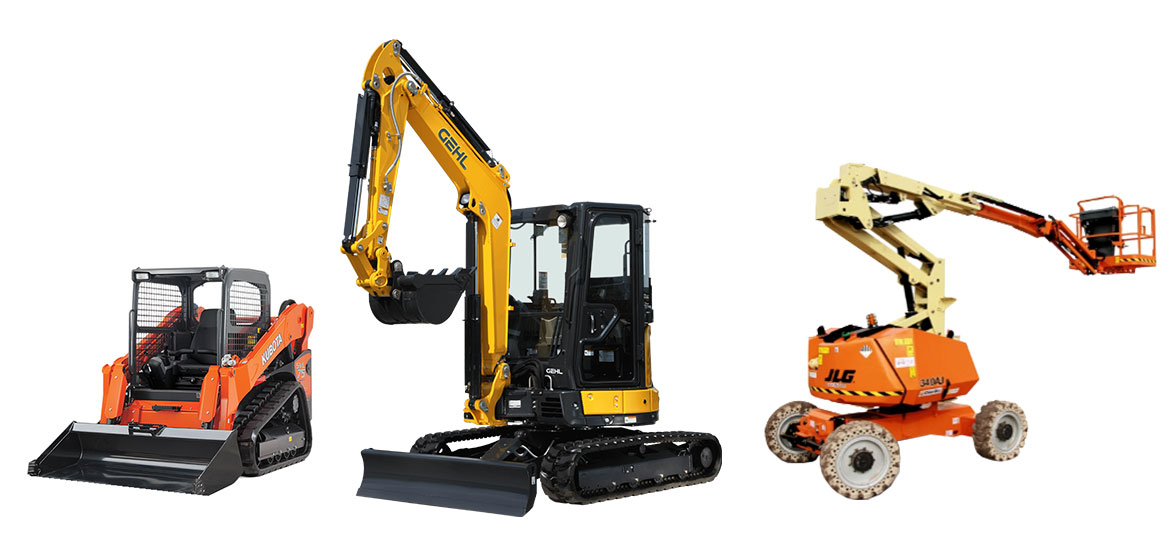Construction Equipment Rentals: Strong Equipment for Your Projects
Construction Equipment Rentals: Strong Equipment for Your Projects
Blog Article
Maximize Your Spending Plan by Comprehending the Prices Connected With Building And Construction Devices Leasings
Understanding the full extent of costs connected with construction devices services is essential for optimizing your spending plan. What techniques can be used to effectively handle these prices and ensure a much more efficient rental experience?
Introduction of Rental Expenses
When thinking about construction equipment rentals, recognizing the connected costs is critical for efficient budgeting and project preparation. Rental costs can differ considerably based upon several factors, consisting of devices kind, period of rental, and place. The initial rental charge often shows the tools's market demand and its linked operational capacities, influencing the general expenditure.
Along with the base rental price, ancillary expenses might arise, such as transport fees, fuel additional charges, and maintenance costs. It is necessary to account for these additional costs to accurately analyze the overall price of leasing equipment. In addition, the rental period can influence pricing; longer services might receive affordable rates, while short-term services could incur higher everyday fees.

Break Down of Rental Rates
A detailed understanding of rental prices is crucial for contractors and task managers aiming to optimize their spending plans. Rental prices for building and construction tools commonly are composed of a number of elements, including base rates, time-based costs, and use charges.
Base rates are the core costs related to the leasing of the devices, frequently determined by the kind and dimension of the machinery. These rates can differ substantially, influenced by factors such as tools need, accessibility, and regional market trends. Time-based charges, which may be daily, weekly, or monthly, offer to accommodate various job timelines and rental durations.
Furthermore, rental prices may consist of usage costs, which apply when devices is utilized past a specified limit, making certain that the rental firm can account for deterioration. Seasonal need fluctuations can also influence rental prices, with peak building seasons usually regulating greater costs.
In addition, comprehending the rental company's policies pertaining to maintenance and insurance policy can supply more insight right into the overall expense framework. By examining these components, service providers can make informed choices, ensuring the choice of rental tools aligns with both job needs and budget restrictions.
Extra Costs to Think About
Recognizing the intricacies of extra costs is essential for specialists to handle their total service expenditures properly. Past the standard rental rates, various supplemental fees can substantially influence the complete expense of devices leasing. These charges commonly consist of shipment and pickup charges, which can vary based on range and logistics entailed in transporting the equipment to and from the work site.
Moreover, some rental firms might enforce gas additional charges if the tools is returned with much less gas than when rented. It is also vital to understand possible cleansing fees, particularly for specialized tools that needs complete maintenance after use.

Extensively examining the rental contract and clarifying these added charges upfront can aid professionals avoid unanticipated expenses and ensure that budget plans continue to be undamaged throughout click for more the project lifecycle.
Repair And Maintenance Expenses
Routine maintenance and repair costs are commonly forgotten factors that can dramatically influence the general cost of building and construction equipment services. When renting equipment, it is crucial to take into consideration not only the rental charges yet also the possible prices connected with maintaining the equipment in optimal operating problem.
Several rental companies include standard upkeep remote control construction equipment as part of the rental contract; nonetheless, more unanticipated break downs or substantial fixings can lead to extra expenditures. It's necessary to evaluate the rental contract very carefully to recognize what maintenance services are covered and what obligations fall on the tenant.
Moreover, tools that is not properly maintained can lead to inefficiencies on duty site, potentially triggering delays and boosting job expenses. To alleviate these dangers, it is a good idea to carry out routine assessments and preserve open communication with the rental supplier pertaining to any kind of concerns that develop throughout usage.
Insurance Coverage and Obligation Expenses
Insurance and liability costs are critical components that can significantly influence the total cost of building equipment services (rental company near me). These expenses ensure that both the rental company and the customer are safeguarded from potential economic losses emerging from mishaps, damage, or burglary during the rental period

Furthermore, customers ought to know any type of deductibles or exemptions in the insurance plan, as these can impact possible out-of-pocket expenses. Comprehending the conditions of any type of insurance policy protection is vital to prevent unanticipated costs. Eventually, budgeting for insurance coverage and obligation expenditures can help make sure a smoother rental experience and protect against monetary threats associated with building tasks.
Conclusion
In final thought, a thorough understanding of the prices linked with building and construction devices leasings is important for effective budget monitoring. Inevitably, notified decision-making concerning equipment services adds to the general success of construction undertakings.
Rental expenses can vary considerably based on several variables, including equipment kind, duration of rental, and area (dozer rental). The rental period can influence pricing; longer services may certify for reduced rates, while temporary rentals could incur greater everyday charges
By carrying out extensive study and involving with trusted rental companies, specialists can efficiently browse the complexities of rental prices, ultimately maximizing their economic resources.
Past the basic rental prices, various extra charges can substantially impact the overall price of equipment service. Rental companies typically provide obligation insurance policy that covers injuries to third celebrations or damages to residential or commercial property, while tools damage insurance coverage can cover the price of repairs or replacement if the leased tools is harmed.
Report this page